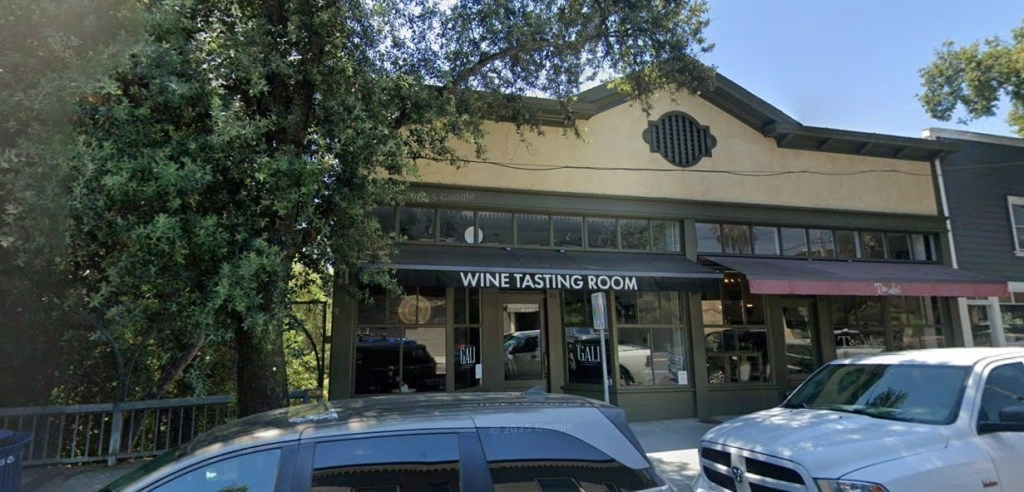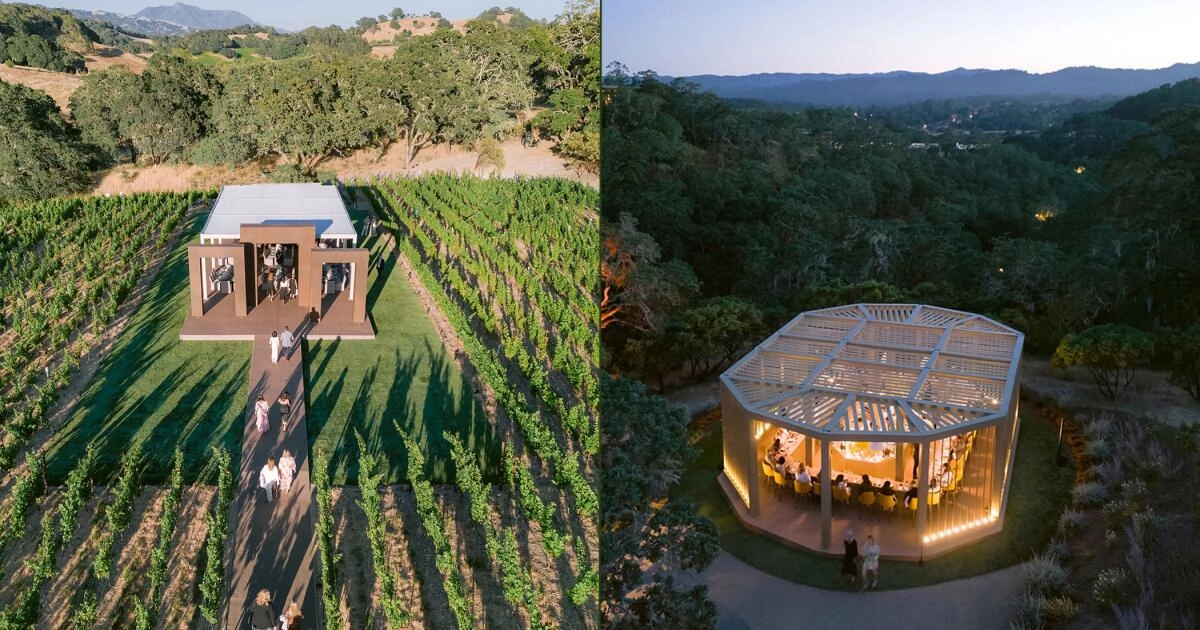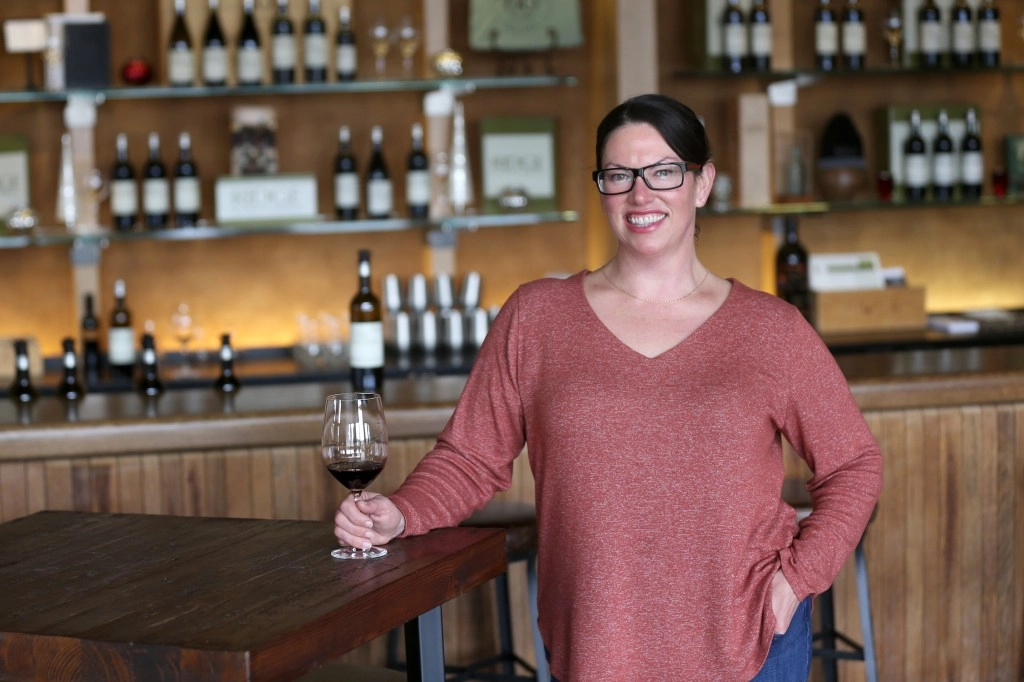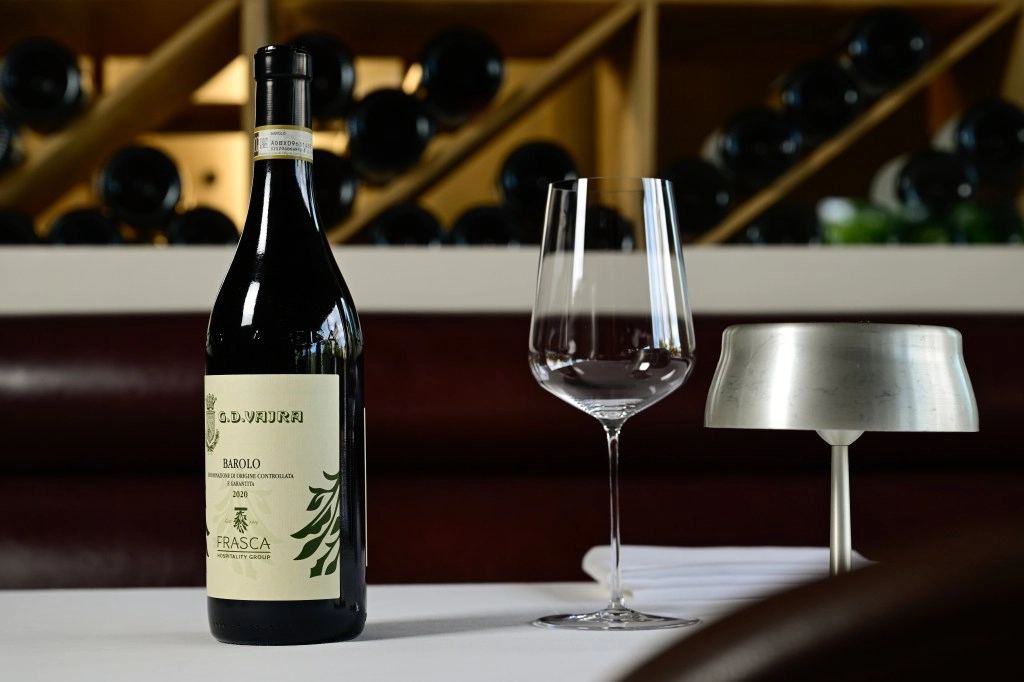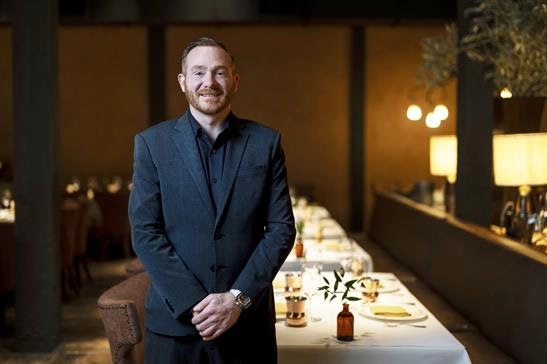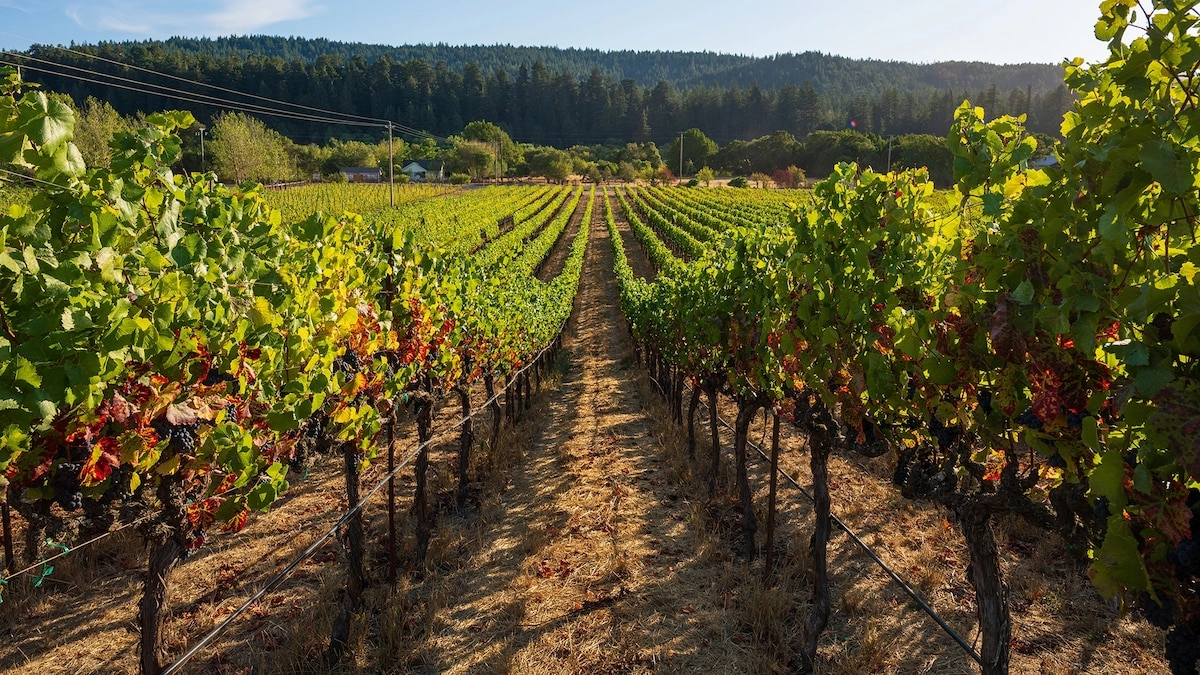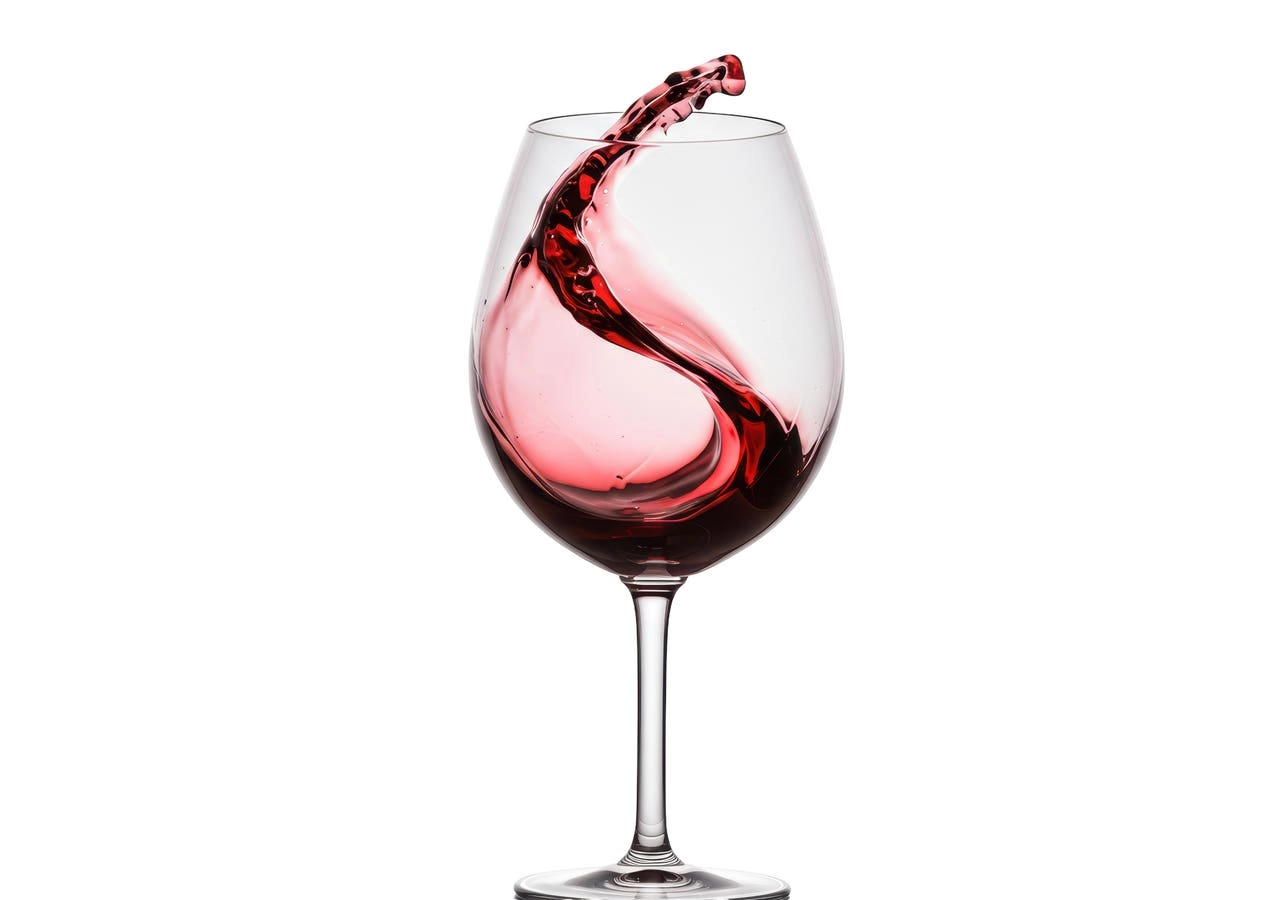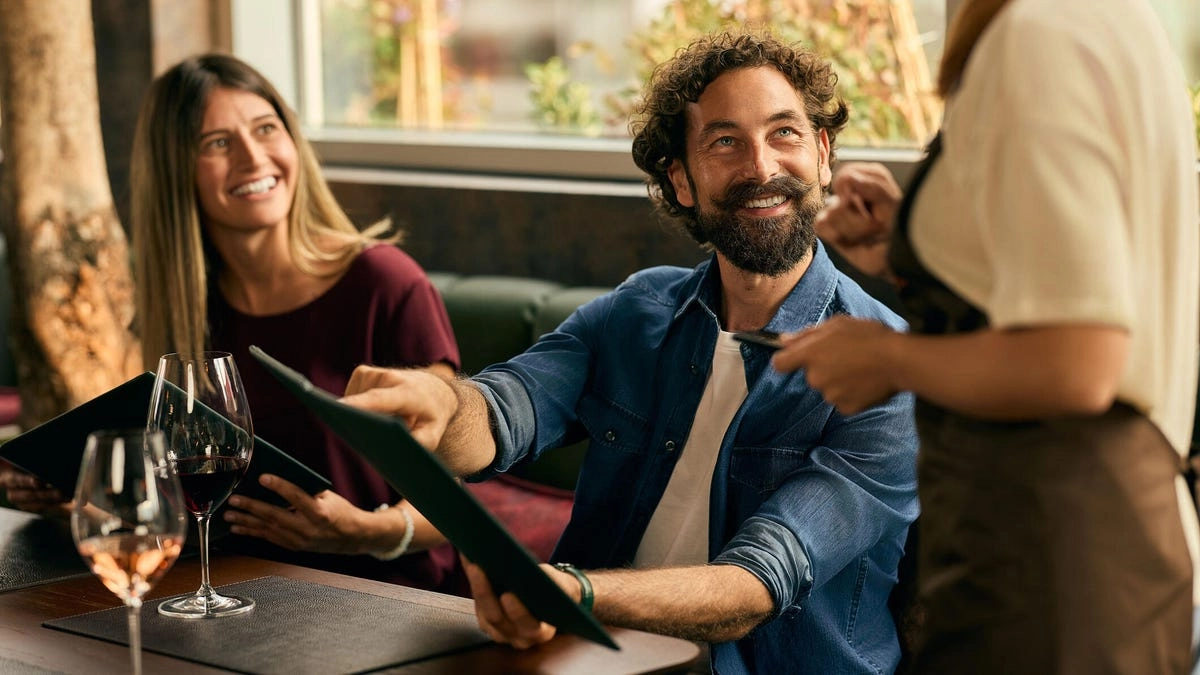Wine 886
Local Los Gatos Building with Wine-Tasting Room Acquired by Area Vintners
A two-story mixed-use building in downtown Los Gatos, which includes a wine-tasting room and a nail salon, has been acquired for $4.6 million. The purchase, finalized on November 18, was made by a South Bay group led by Brian Dexheimer through an all-cash deal. The property, located at 21 and 23 West Main Street, spans approximately 7,200 square feet and is situated just a block away from University Avenue.
Currently, Gali Vineyards operates a tasting room within the retail space, featuring wines from their estate in Corralitos, while the back of the building houses two luxurious apartments and a large garage that intends to serve as an artist’s workshop under the new ownership. The tasting room has been in operation since 2021.
John Machado, the broker from Colliers who facilitated the sale, emphasized the strength of the downtown Los Gatos market, drawing parallels to similarly affluent areas like downtown Menlo Park and Los Altos. The locality, characterized by high income levels and stringent development controls, has been witnessing an increase in demand for mixed-use properties, with Machado having previously sold around 15 buildings in the area. This trend suggests continued interest from investors in affluent downtown regions.
Montage Healdsburg: Experience a Luxurious Wedding Weekend in Sonoma’s Wine Country
Montage Healdsburg, nestled in Sonoma County, offers an idyllic setting for a luxury wedding among the vines. Spanning 258 acres, the resort features 130 bungalow-style rooms and 34 suites that blend seamlessly into the landscape of vineyards and oak-covered hills. Noteworthy wedding venues include the Grand Ballroom, The Grove, and picturesque lawns, capable of hosting events ranging from intimate gatherings to receptions for up to 250 guests.
Visitors often comment on the warm, welcoming atmosphere, as well as the stunning natural beauty surrounding the property. The journey from San Francisco is a brief transition into a different world, marked by the breathtaking countryside that can be enjoyed as soon as one rolls down the car windows.
Upon arrival, guests are greeted with refreshing hospitality, creating a sense of calm that sets the tone for the stay. Each bungalow is thoughtfully designed, emphasizing light and simplicity, while many offer fire pits and soaking tubs with picturesque views of the landscape.
After exploring the resort, including venues like The Grove and the expansive Grand Lawn adorned with views of Mount Saint Helena, visitors can experience local cuisine at the on-site Hazel Hill restaurant. The menu features fresh, seasonal dishes complemented by wine from the estate’s own vineyard. The atmosphere is lively yet relaxed, making every dining experience feel special.
The resort is designed specifically for celebrations, ensuring that each wedding weekend is tailored to the couple’s vision. From grand events in the Grand Ballroom to intimate gatherings in spaces like the Oak Room, the architecture and layout facilitate a fluid transition between different phases of the celebration without disrupting the flow of the evening.
What stands out most about Montage Healdsburg is not just its elegance but the genuine service provided by the staff. Their dedication to creating memorable experiences for guests extends beyond weddings, featuring amenities like a spa, a kids’ club, and concierge services to arrange wine tastings and outdoor adventures.
Finally, as guests enjoy their stay, they often feel a deep connection to the natural world around them. The experience at Montage Healdsburg is not just about luxury but also about finding peace, creating lasting memories, and celebrating love in an enchanting setting. For anyone looking for a vineyard wedding destination, this gem in Sonoma truly embodies the essence of romance and tranquility.
Sonoma County Wines Make a Splash in Wine Spectator’s Top 100 List
More than 10,000 wines were assessed to create Wine Spectator’s coveted Top 100 list, which features the most compelling selections. This year, Sonoma County proudly secured its place with four wines making the top 10 and ten wineries featured in the overall top 100.
Wine Spectator’s editors evaluated over 5,500 wines based on criteria such as quality, value, availability, and an elusive quality they describe as “excitement.” The top-ranked wine was a Château Giscours Margaux 2022 from Bordeaux, but it was closely followed by Sonoma County’s Aubert Wines 2023 Sonoma Coast Chardonnay from UV-SL Vineyard priced at $100. Described by reviewer MaryAnn Worobiec as offering a “stunning mix” of flavors including crème brulee and peach preserves, this wine has garnered significant attention.
In third place was the Ridge Vineyards 2023 Lytton Springs from Dry Creek Valley ($56), a complex Zinfandel enriched with Petite Syrah and other varietals. Tim Fish, an editor at Wine Spectator, highlighted its “bold blackberry” notes and complex structure.
Fourth place went to William Selyem’s 2023 Pinot Noir from Eastside Road Neighbors in the Russian River Valley priced at $72, praised for its floral purity and vibrant flavors. Finally, at eighth, Wayfarer’s 2023 Pinot Noir from Wayfarer Vineyard in Fort Ross-Seaview ($100), crafted from a variety of Pinot Noir clones, showcased winemaker Todd Kohn’s skill.
Additional Sonoma County wines featured in this esteemed list include:
- Bedrock Wine Co. 2023 Bedrock Vineyard Heritage Red Wine, Sonoma Valley ($60)
- Patz & Hall 2022 Chardonnay, Sonoma Coast ($35)
- Dry Creek Vineyard 2023 Chenin Blanc, Clarksburg ($18)
- Hartford Family 2022 Old Vine Zinfandel, Russian River Valley ($50)
- Ravenswood 2023 Zinfandel, Dry Creek Valley ($27)
- Dehlinger 2023 Pinot Noir, Russian River Valley ($50)
- Platt Vineyard 2023 Estate Reserve Pinot Noir, West Sonoma Coast ($165)
For more information, you can check out the complete list here.
Cheers to the Holidays: Denver and Boulder Wine Experts Share Their Top Picks!
As the holiday season approaches, the fear of uninspiring wines looms large at festive gatherings. The dreaded appearance of supermarket wine, typified by a bottle of flabby Chardonnay, can send shivers down the spine of even the most seasoned host. With memories of past experiences washing over, the best defense is clear: bring your own quality wine.
To help you navigate the holiday wine scene, several sommeliers and wine professionals from Boulder and Denver shared their top picks for the festive season, ensuring you don’t have to suffer through a glass of awkward holiday wine.
James Keiser, beverage manager at Corsica Wine Bar, stresses the importance of selecting something that invites conversation. He suggests a 2016 Domaine Ventoura Chardonnay from Burgundy—a perfect choice for those who typically stick to more popular regions. This line of thinking extends to his holiday tradition, where he recalls special bottles enjoyed with family while watching festive films.
For Keiser, wine selection could be as approachable as a Buganza Nebbiolo or a Langhe Nebbiolo from Tintero, both of which appeal to a wide range of palates without breaking the bank. He favors shopping at Mr. B’s Wine & Spirits for unique picks and recommends larger stores like Molly’s Spirits for bulk purchases.
Next, Michael Harney, beverage director at Barcelona Wine Bar, reveals his holiday strategy involves impressing family with wines that spark conversation. His personal favorite is Vega Clara Mario, a harmonious blend of Tempranillo and Cabernet Sauvignon. For budget-friendly options, he suggests López de Heredia’s Viña Cubillo Crianza, which is both classic and affordable.
Owner Mary Kent of Sienna Wine Bar opts to lean heavily into sparkling wines for holiday gatherings. She frequently stocks her parties with Laurent-Perrier Vintage Rosé and local selections like La Capranera Falanghina—a perfect match for festive dishes. Kent cherishes the communal spirit of celebration and emphasizes the enjoyment of sharing good wine.
Lastly, at Frasca Hospitality Group, Carlin Karr brings her expertise from Michelin-starred backgrounds to her holiday celebrations by selecting versatile wines that complement traditional dishes. She favors Burgundy Pinot Noir and Cru Beaujolais, particularly Jean Foillard’s Morgon, which encapsulates the essence of the season.
As you prepare for your own holiday gatherings, remember that it’s not just about the food—bringing thoughtful wines can elevate the entire dining experience. With expert recommendations and a focus on diversity in selections, your festive tables will be far from lackluster this year.
For more tips on holiday wines, explore these resources:
The Surprising Red Wine to Elevate Your Thanksgiving Celebration
While traditional Thanksgiving wine guides often highlight celebrated options like pinot noir and chardonnay, sommelier Alex Cuper suggests considering carménère, a lesser-known varietal from South America. As the wine curator at El Che Steakhouse & Bar and Brasero in Chicago, Cuper has curated an impressive collection of South American wines that invites diners to rethink their choices.
Cuper describes carménère as having a velvety fruit character similar to merlot but with more structure, making it a fitting companion for a Thanksgiving meal that includes turkey, sweet potatoes, cranberry sauce, and rich gravy. Once thought to be extinct in France, carménère was rediscovered in Chile in the 1990s and has emerged as a signature red grape of the region.
For a notable centerpiece, Cuper recommends the Lapostolle Clos Apalta, a thoughtfully crafted wine that blends carménère with cabernet sauvignon and merlot, offering elegance and rich dark fruit that pairs well with various Thanksgiving flavors. Priced over $100, it is a conversation starter that lingers in the memory long after the meal.
An alternative that offers great value is Lapostolle Petit Clos, which combines carménère with cabernet sauvignon, merlot, and petit verdot. At about half the price of Clos Apalta, it provides plenty of flavor while being accessible for those conscious of their budgets.
Cuper also suggests Montes Purple Angel for those who enjoy bold wines, marked by rich flavors of red and black fruits with chocolate notes and plush tannins. For a more budget-friendly option, Montes Wings delivers similar attributes at a lower price point.
Cuper’s recommendations highlight that South American wines, while often underappreciated, can offer exceptional quality and value, encouraging hosts to share unique stories about their selections during holiday gatherings. This Thanksgiving, consider embracing carménère for a wine that not only complements the meal but also adds a touch of adventure to the dining experience.
Discover Affordable, Award-Winning Wines at Aldi for Under $15!
Aldi has made a name for itself as a go-to grocery store, evolving from a small family-run market in Germany to an international chain with over 2,500 locations across the U.S. For shoppers seeking quality products at affordable prices, Aldi offers a variety of food items, including an impressive selection of wines.
One notable standout in their wine collection is the Specially Selected Fleurs d’Eau Brut Rosé Sparkling Wine, priced at just $12.25. This wine has garnered recognition as a 2025 USA Consumer Product of the Year, celebrated for its balanced flavor and elegant presentation, making it suitable for any dinner party. Its versatility as a food pairing wine, complementing dishes from fried foods to seafood, adds to its appeal.
In addition to the Fleurs d’Eau, Aldi has consistently impressed wine lovers with its sparkling wines. The Belletti Prosecco Sparkling Wine, costing only $11, won the Product of the Year for wine in 2024, praised for its bright aromas and crisp taste. Furthermore, their California Heritage Brut and Extra Dry Sparkling Wines are available for just $5.49 each, offering smooth textures and balanced flavors that have received favorable reviews.
Even more remarkable, Aldi sells the Veuve Monsigny Champagne Brut, which was named the World’s Best Champagne at the 2025 World Champagne Awards. This accolade emphasizes that exceptional wines are accessible even at budget-friendly retailers like Aldi.
For those interested in discovering these wines, Aldi provides an opportunity to enjoy high-quality beverages without overspending.
Yountville Restaurant Welcomes New Wine Director to Curate Exceptional Wine Experiences
Bottega Napa Valley has announced the appointment of Stephen Arnold as their new wine director. The owners, Rich Frank and John Hansen, expressed their enthusiasm for Arnold’s arrival, highlighting his expertise and potential to enhance the wine program at the establishment.
In a press release issued on November 10, Hansen said, "We’re confident that he is going to bring our wine program to the next level and his expertise will only complement the magic that Chef Alex is creating in the kitchen."
Arnold, who previously worked as a sommelier at PRESS, conveyed his excitement about joining the Bottega team. He stated, "I couldn’t be more excited to work alongside such an outstanding team. I’m looking forward to… breathe new life into Bottega’s already bountiful wine cellar and expand both our domestic and international selections."
With a background in various prestigious establishments on the East Coast and in Los Angeles, Arnold aims to share his passion for wine with guests at Bottega.
The Ultimate Guide to Exploring Sonoma’s Wine Country: Discover Vineyards, Tastings, and Hidden Gems
With its lush landscapes, organic produce, and sustainable wineries, Sonoma County in Northern California presents a serene alternative to its renowned neighbor, Napa Valley. Just an hour north of San Francisco, you’ll find picturesque scenery with misty valleys, sunlit meadows, and a stunning Pacific coastline. Quaint towns with historic architecture and artisan shops invoke a slower-paced lifestyle, while farm-fresh offerings take center stage on local menus. Sonoma has been integral to California’s wine narrative for over a decade, adopting sustainable practices that rival Napa Valley’s reputation. It’s in the rolling hills and fertile valleys of Sonoma where California’s wine culture blossomed in the 19th century.
Central to this wine journey is the Russian River Valley, located between Sebastopol and Santa Rosa. This area is alive with wine producers, each crafting cool-climate wines that highlight the region’s unique terroir; Chardonnay and Pinot Noir are standout varietals.
Sustainable practices are at the heart of many local wineries, including Horse & Plow, a family-owned establishment founded in 2008. Suzanne Hagins, co-owner, notes, “Organic farming gives us more expressive grapes, higher quality wines, and is better for the environment.” At this winery, visitors can taste organic wines and ciders made from locally grown apples, all in a rustic setting that invites relaxation and connection to nature.
Tasting at Horse & Plow includes a range of options from ciders to reds and whites. For instance, Gravenstein cider offers a brief sparkling experience reminiscent of champagne, paired delightfully with local cured meats and nuts.
Visitors can explore downtown Sebastopol, a vibrant cultural hub that evolved from its ‘hippie’ roots into a lively marketplace called The Barlow. There, shops and restaurants offer local artisan products. A visit to Pax Winery & Tasting Room rewards with an earthy Grenache Mourvèdre, while Region pairs Sonoma wines with Minnesota-inspired dishes such as a seasonal farmers’ market salad. For a unique experience, Fern Bar serves drinks created from local edible blooms in a lush, plant-filled environment.
Accommodations like The Lodge at Bodega Bay offer a tranquil retreat, with beautiful views of Doran Beach and comfortable rooms that feel homey, complete with fireplaces. A hot tub overlooking the coastline is a perfect way to unwind after a day of exploration.
On the next day, mushroom foraging in nearby Salt Point State Park becomes a venture into Sonoma’s natural bounty led by foraging expert Alexander "Ty" Kun. He shares insights into the multitude of wild ingredients available throughout the year, from berries to mushrooms, reinforcing Sonoma’s commitment to sustainability and natural living.
Lastly, the artisanal community extends to Dickinson Glass Studio, where visitors can participate in flamework workshops. There, aspiring artisans can create unique items representative of Sonoma’s character, earning them a special connection to the land.
For anyone planning to visit Sonoma, these unique experiences, combined with the county’s dedication to sustainable agriculture and local produce, assure a memorable exploration into California’s thriving wine country.
Recommended wineries to visit:
-
The Donum Estate: An organic winery rich in art and nature.
-
Ferrari-Carano Winery: A sustainable winery with beautiful gardens and tastings.
-
Flowers Vineyards & Winery: Known for its stunning views and organic practices.
Travel Tips:
- Daily flights from Heathrow to San Francisco are available through British Airways.
- Accommodations at The Lodge at Bodega Bay start from $399 per night.
- Foraging excursions are available starting at $150 per person.
- Glass workshops are offered at $95 per person.
Top Napa Wine Producers Achieving the Most 100-Point Scores for Exceptional Cabernet Sauvignon
A Napa Valley winemaker, Thomas Rivers Brown, has achieved an extraordinary milestone with 39 perfect 100-point scores for his exceptional Cabernet Sauvignon sourced from the renowned To Kalon vineyard.
This remarkable journey began unexpectedly for Brown during a formal dinner where he was accompanying his girlfriend, a newly minted Rhodes Scholar. Seated at a table with notable figures such as journalist Katie Couric and the president of the University of Virginia, he felt the weight of his surroundings and humorously pondered, "Who is this dude?" Such experiences only spurred his intrigue in wine, leading him to embark on an impromptu road trip to Napa Valley just a week later.
Raised in Sumter, South Carolina—an area not known for its wine culture—Brown initially did not envision a future in winemaking. His career shift began in the mid-1990s when he joined Turley, a small winery with a burgeoning reputation. His inclination for hard work and passion for wine were recognized by the head winemaker, who valued talent over traditional lineage in the field.
By 2000, Brown was associated with Schrader Cellars, where he produced wine from To Kalon, receiving his first 100-point score in 2002. His approach emphasized showcasing the vineyard’s true essence, a philosophy that has earned him acclaim. His wines reflect a focus on the land rather than imposing his style, captivating critics with their authenticity.
Schrader Cellars initially sourced from the Beckstoffer portion of To Kalon—one of Napa’s most prestigious sites. With time, ownership transitioned from legendary winemaker Robert Mondavi to Constellation Brands, which now markets Schrader’s limited-release wines. Mondavi’s legacy is one of resilience and vision, having championed Napa Valley when it was not respected on the global stage, and normalizing extraordinary winemaking practices in the region.
The To Kalon vineyard remains a testament to this enduring legacy, known for its diverse terroirs enabling Schrader Cellars to create multiple intriguing bottlings. For instance, the "TKS" bottling comes from southern blocks characterized by unique soil composition, while the "Heritage Clone" represents a specific Cabernet Sauvignon clone renowned for its small berries and high quality.
As Brown reflects on his 25-year journey in winemaking, he attributes much of his success to the collaborative energies of influential figures like Fred Schrader and the vision they shared. Their partnership has led to a thriving legacy for Napa Cabernet, highlighted in exceptional vintages like 2023, deemed a "vintage of a lifetime."
Today’s offerings from Schrader Cellars showcase the extraordinary effects of terroir and winemaking finesse. The 2023 Cabernet selections exhibit profound flavors and complexity, showcasing notes of graphite, plum, wildflowers, and rich black cherry—a harmonious blend of old-world elegance and new-world innovation. These wines not only symbolize personal milestones but also represent the remarkable narrative of Napa Valley’s ascent that Brown and predecessors have woven together.
For more about Thomas Rivers Brown and his legacy, visit Schrader Cellars.
Expert Tips from a Sommelier: How to Order Wine with Confidence on a Budget
Don’t let an extensive restaurant wine list intimidate you. Here are some expert tips for ordering a great bottle without overspending, thanks to insights from Baptiste Beaumard, a sommelier at the Michelin-starred Restaurant Daniel in New York.
Trust the Sommelier
Utilize the knowledge and expertise of the sommelier. Share your preferences regarding the type of wine you enjoy and your price range. Beaumard emphasizes that sommeliers want you to feel comfortable and find the right wine rather than pushing an expensive bottle.
Indicate Your Budget Discreetly
You don’t have to verbally state your budget; you can point to a couple of bottles within your price range on the wine list. This communicates your budget subtly while still engaging the sommelier.
Inquire About Budget-Friendly Options
Ask the sommelier for recommendations on budget-friendly wines. There are excellent wines from lesser-known regions that can provide great value, often flying under the radar compared to their more famous counterparts.
Explore Specific Sections of the Wine List
Look for sections that traditionally offer better value, such as sparkling wines that may emulate Champagne without the high price tag. Regions like Spain and Australia, as well as lesser-known French regions like Savoie and Loire Valley, often produce fantastic wines at lower prices.
Leverage Wine Apps
If you have a smart device, don’t hesitate to use wine apps like Vivino or Wine-Searcher to read reviews and tasting notes on the bottles available. However, rely on the sommelier’s expertise for the best guidance when selecting a wine.
Be Honest About Your Preference
When tasting the wine, if it doesn’t appeal to you, let the sommelier know. Many establishments will allow for a bottle to be exchanged if it doesn’t meet your taste, ensuring your overall experience remains enjoyable.
Consider Ordering By the Glass
To reduce the risk of being stuck with a bottle you don’t like, consider choosing a wine that is also available by the glass. This offers you the chance to taste it first and ensures that the restaurant can use the opened bottle for other guests if needed.
By employing these strategies, you can confidently navigate a restaurant wine list and find a bottle that complements your meal and suits your budget.
